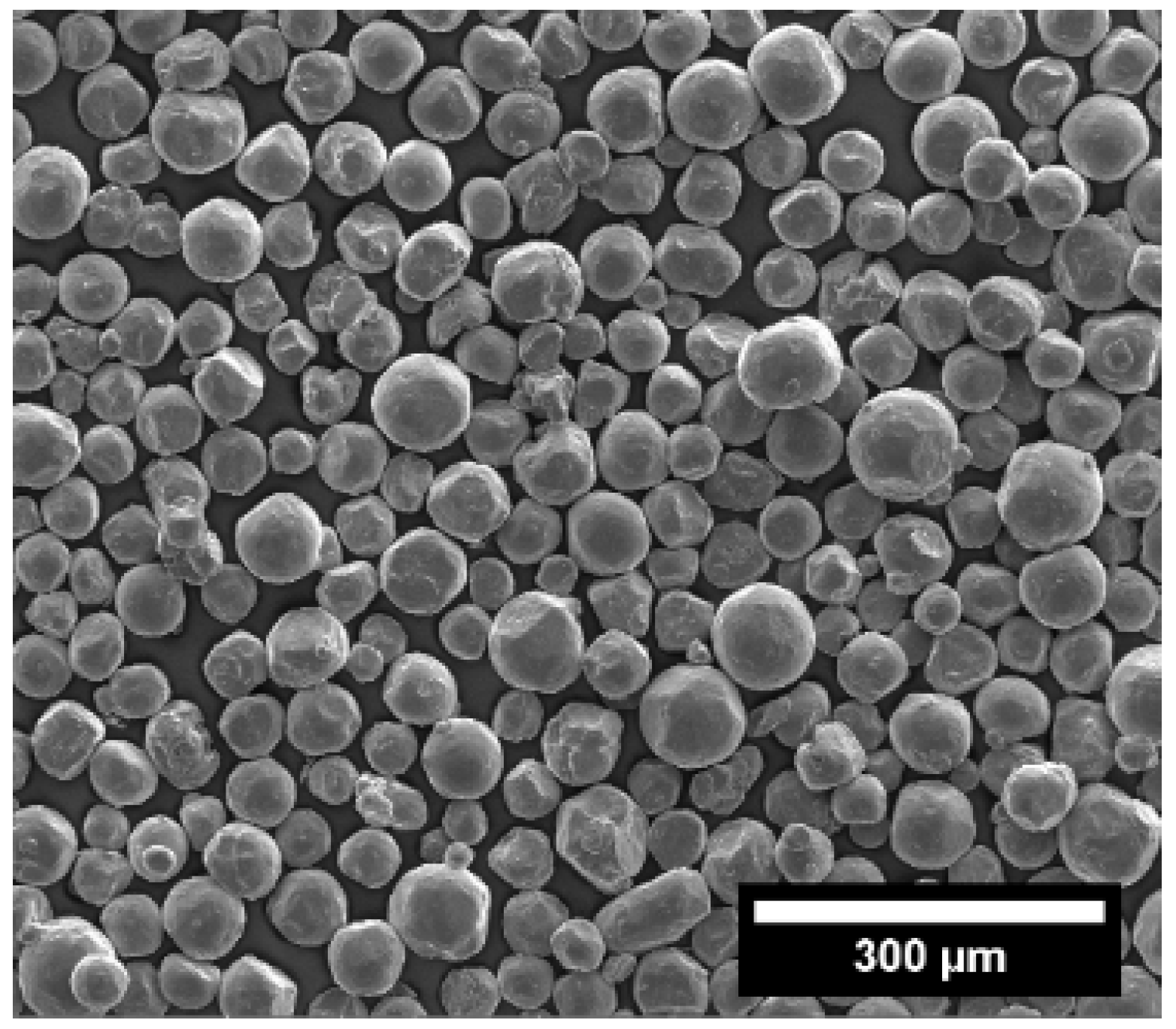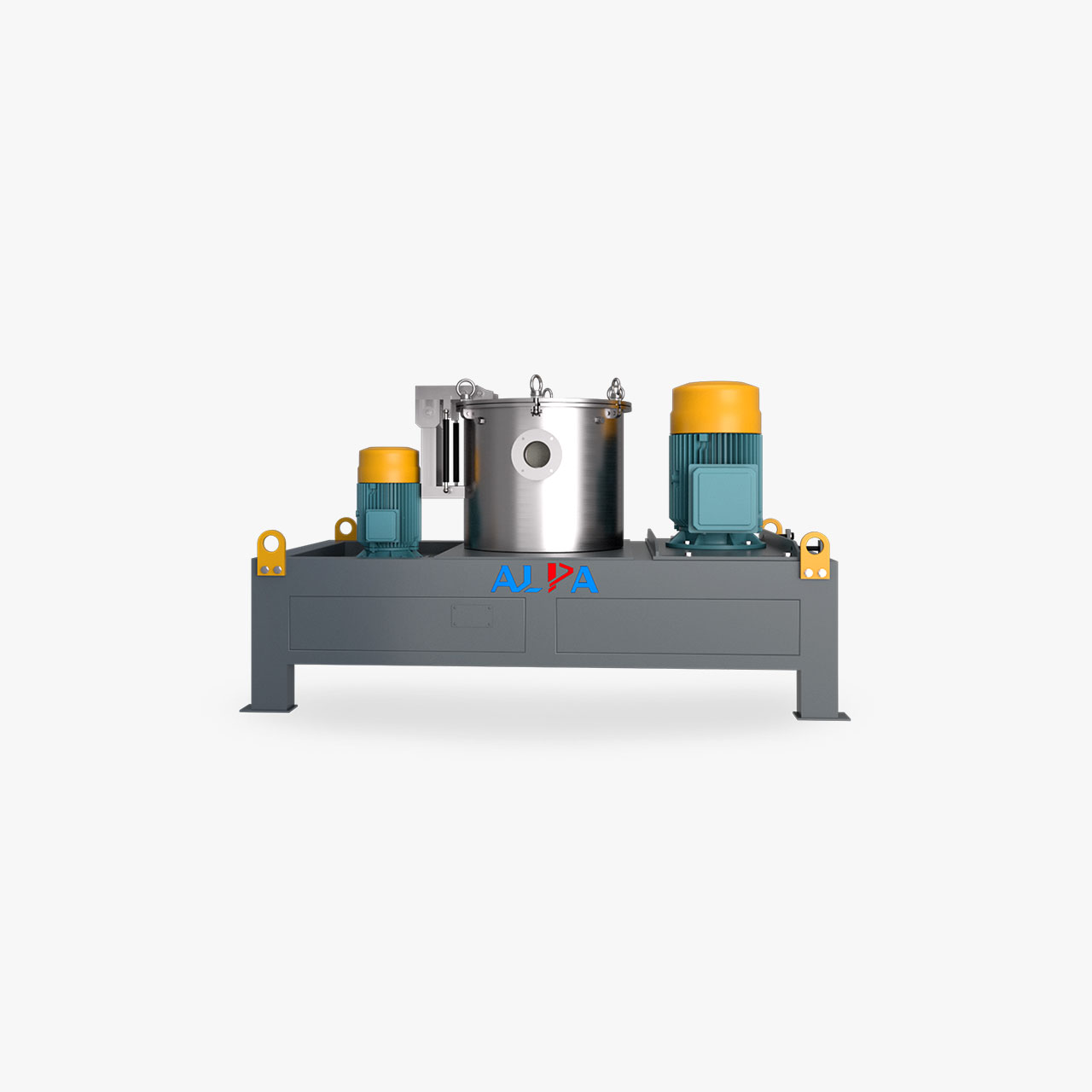Which high-end powders require surface modification?
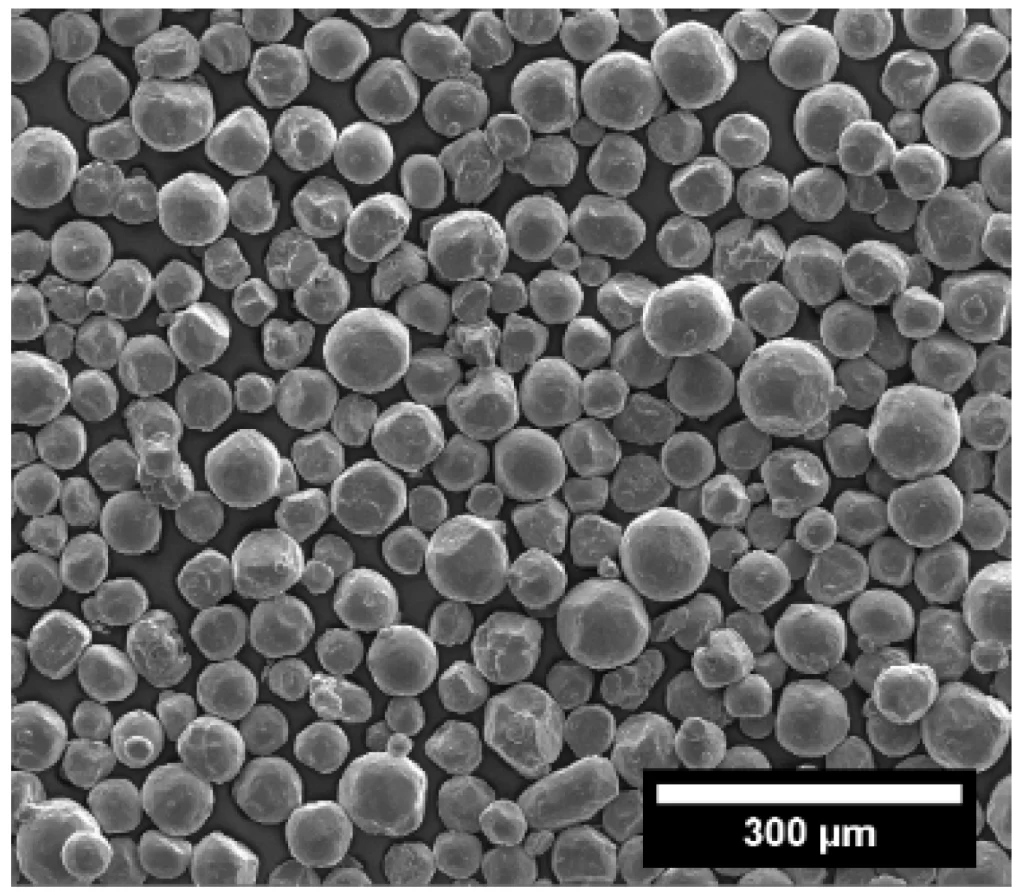
High-end powders that require surface modification mainly include inorganic powders and ultrafine powders. Here are specific examples and why:
Inorganic powder
Inorganic powders such as porous silica, silica powder, etc. can increase their surface hydroxyl content through surface modification and enhance the hydration effect, thus improving their compatibility and mechanical properties in composite materials. In addition, surface modification of inorganic powders can also improve their gloss, tinting power, hiding power, color retention and weather resistance.
Ultrafine powder
Since ultrafine powder has a small particle size and high surface energy and is prone to agglomeration, surface modification is required to prevent agglomeration and impart new functionality, such as hydrophilicity or lipophilicity. For example, in the cosmetics industry, surface modification of powders must not only block their catalytic activity, but also impart the required functionality.
Metal powder
Surface modification technology of metal powders can be used to extend the service life of parts and improve performance, making it possible to prepare metal powder materials with better performance.
Surface modification of these powders usually involves physical, chemical or mechanical methods to change the physical and chemical properties of the powder material surface to meet the needs of specific applications. For example, the surface of porous silica can be activated by microwave radiation and air plasma treatment, or the modifier can be evenly distributed on the outer surface of the powder particles using mechanical forces such as extrusion, impact, shearing, and friction.
In summary, high-end powders that require surface modification mainly include inorganic powders, ultrafine powders and metal powders. The purpose of modification is mainly to improve the performance of the powder, increase functionality and improve the compatibility with other substances. Capacity.
What are the applications of natural cellulose powder and protein powder?
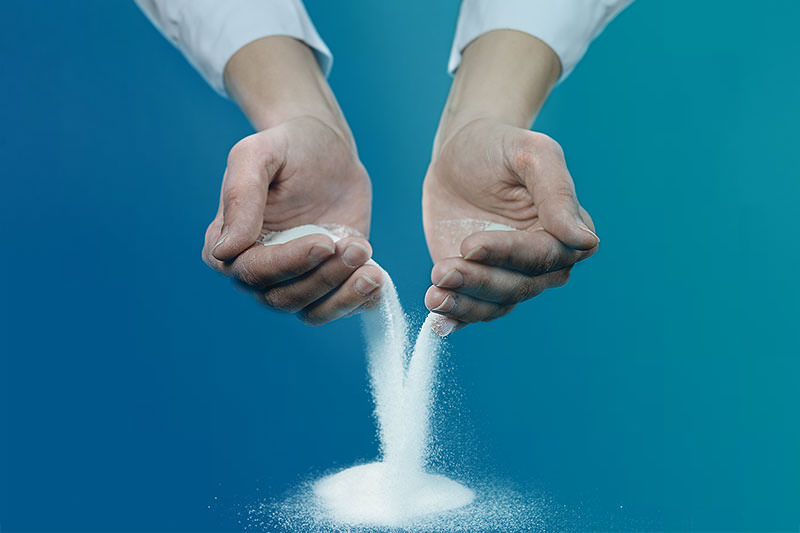
There is a waste problem of natural cellulose and natural protein in the textile industry, agriculture, papermaking and other fields. Natural cellulose and natural protein that have been processed many times cannot degrade by themselves and will cause serious environmental pollution. Therefore, how to efficiently recycle and utilize them Waste natural fiber materials have become a research hotspot. Usually when a material is processed into powder, its properties will undergo a series of changes, such as specific surface area, surface energy, surface activity, surface and interface properties, and crystallinity.
Application of natural cellulose powder
(1) Medical applications
As a new biomedical material, cellulose powder not only acts as a natural barrier to prevent allergens from combining with the nasal mucosa, but can also reduce allergic symptoms in children who are sensitive to insects; because it is a natural cellulose powder, it can be used by pregnant women and special groups. use.
(2) Applications in food and packaging materials
Most of the current food packaging materials are non-degradable, and degradable food packaging bags can greatly alleviate environmental pollution problems. Cellulose is non-toxic and a renewable resource. It is a good material for making degradable food packaging bags.
(3) Application of flame retardant materials
Using natural cellulose powder to replace the carbon source pentaerythritol in the traditional intumescent flame retardant system not only changes the shortcomings of the large amount of carbon source and poor compatibility in the traditional intumescent flame retardant system, but also increases the number of intumescent carbon layers and reduces the flame retardancy.
(4) Applications in sensing materials
Nano-zinc oxide (ZnO) ultraviolet (UV) sensors can be produced using a simple and low-cost two-step chemical method, so they have attracted much attention from researchers. Studies have found that the UV sensing activity of nano-ZnO can be significantly enhanced by synthesis with cellulose polymers.
Application of natural protein powder
(1) Applications in biomedical materials
Protein powder is widely used in biomedical materials due to its good biodegradation and biocompatibility. Using silk fibroin powder and polyacrylamide to make new hydrogels can improve the mechanical properties of the hydrogel, making it adhesive and self-healing. It has broad application prospects in wound dressings and transparent artificial skin. Protein powder also has great application potential in the development of small-diameter textile-based artificial blood vessels.
(2) Applications in composite materials
Mixing natural protein powder with other polymer materials to prepare new natural polymer materials can improve processing performance, etc., and provides a new direction for manufacturing natural-synthetic composite polymer materials. Natural protein powder, graphene oxide and catalyst nickel are used as raw materials to make conductive composite materials.
(3) Application of additives
Protein powder is added to coatings as a breathable agent and applied to clothing to improve its breathability. The biggest disadvantage of coatings applied to fabrics is poor air permeability. Adding silk fibroin protein powder to protective coatings that prevent thermal radiation improves the permeability of protective clothing to water vapor and air, and provides improvements to fabrics after coating.
Cellulose powder and protein powder with good application prospects are obtained from waste fabrics, agricultural waste and other waste materials, realizing the environmental protection concept of waste recycling. The biodegradability and biocompatibility of cellulose powder and protein powder are Capacitive is also widely used in medicine and materials, but the preparation efficiency of cellulose powder and protein powder is low, and the common preparation method of cellulose requires a large number of chemical reagents, and the degree of reaction is difficult to control; Preparation method of protein powder Traditional drying methods have low yields, and centrifugal separation from solvents is prone to agglomeration. Based on these problems, more efficient and low-energy consumption preparation methods should be innovated according to their own characteristics. With the continuous research on renewable natural protein powder and natural cellulose powder, more new application fields are developed, such as cosmetics and coatings. In the near future, natural protein powder and natural cellulose powder will create greater value.
Application of aluminum nitride in the field of high thermal conductivity
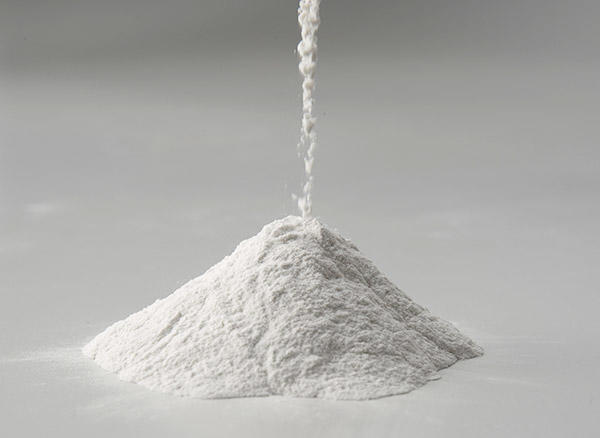
At present, the application of aluminum nitride in the field of high thermal conductivity mainly focuses on two aspects: packaging substrate and thermal conductive filler.
Ideal electronic packaging substrate material
The packaging substrate mainly uses the high thermal conductivity of the material itself to conduct heat away from the chip (heat source) to achieve heat exchange with the external environment. For power semiconductor devices, the packaging substrate must meet the following requirements:
(1) High thermal conductivity;
(2) Match the thermal expansion coefficient of the chip material;
(3) It has good heat resistance, meets the high temperature use requirements of power devices, and has good thermal stability;
(4) Good insulation, meeting the electrical interconnection and insulation requirements of the device;
(5) High mechanical strength, meeting the strength requirements of device processing, packaging and application processes;
(6) The price is appropriate and suitable for large-scale production and application.
Thermal conductive filler
With the miniaturization and high integration of electronic products and their devices, heat dissipation issues have become an important bottleneck restricting the development of electronic technology, and thermally conductive composite materials such as thermal interface materials, which determine the heat dissipation effect, have attracted more and more attention.
Currently, commercial thermally conductive composite materials are generally composed of polymers and thermally conductive fillers. Since the thermal conductivity of polymers is very low, generally less than 0.5W/m·K, the thermal conductivity of thermally conductive composite materials is mainly determined by thermally conductive fillers. At present, the most widely used fillers on the market are oxide fillers represented by Al2O3, etc. However, the intrinsic thermal conductivity of alumina is only 38~42W/m·K. Due to its limitation, it will be difficult to prepare heat dissipation materials that meet the requirements of the future. Thermal conductive composite materials required by the market.
It should be pointed out that although the overall performance of aluminum nitride is far better than that of aluminum oxide, beryllium oxide and silicon carbide, and it is considered an ideal material for highly integrated semiconductor substrates and electronic device packaging, it is prone to hydrolysis by absorbing water in the air. The reaction causes the surface to be coated with an aluminum hydroxide film, which interrupts the thermal conduction path and affects the transmission of phonons. Moreover, its large content of filling will greatly increase the viscosity of the polymer, which is not conducive to molding processing.
In order to overcome the above problems, the surface modification of aluminum nitride thermally conductive particles must be carried out to improve the interface bonding problem between the two. At present, there are two main methods to modify the surface of inorganic particles. One is the surface chemical reaction method, which is the adsorption or reaction of small molecular substances such as coupling agents on the surface of inorganic particles. The other is the surface grafting method, which is a grafting reaction between polymer monomers and hydroxyl groups on the surface of inorganic particles.
Currently commonly used are coupling agent surface modifications, such as silane and titanate coupling agents and other types of surface treatment agents. Compared with the surface chemical reaction method, the surface grafting method has greater flexibility. It can select monomers and grafting reaction processes that meet the conditions according to different characteristic requirements.
Applications of zeolite in various fields
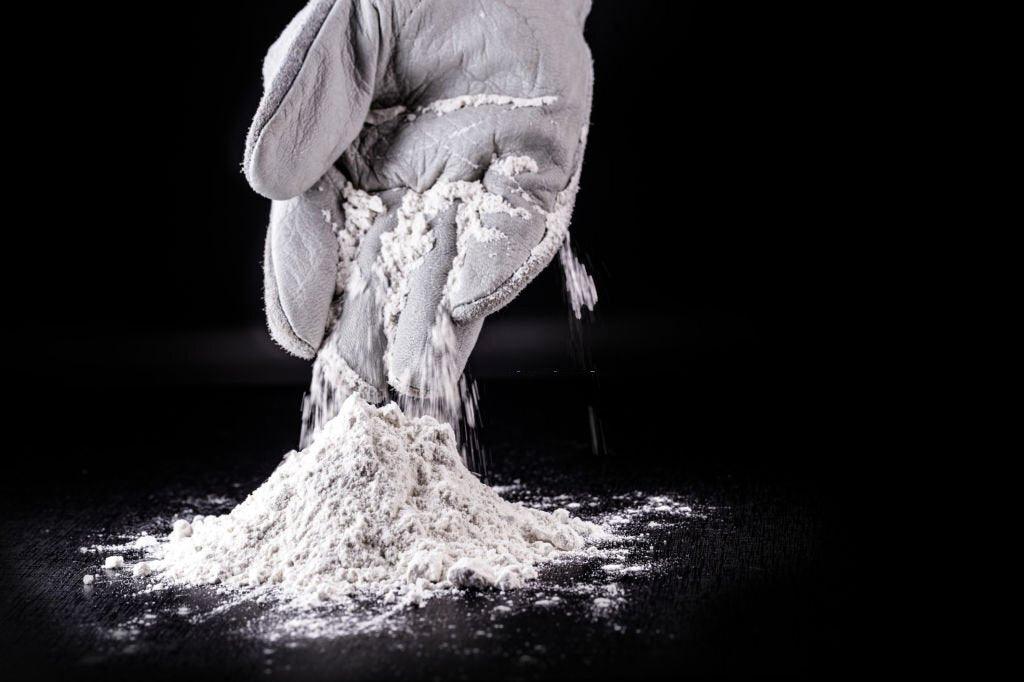
For many years, zeolite has been mainly used for blood purification in the medical field. In developed countries such as Europe and the United States, micronized zeolite has been hailed as a "natural medical device" in the medical field.
Because zeolite itself has a regular porous structure and small particle size, it can filter molecules, exchange cations, and adsorb heavy metal substances. Therefore, after zeolite enters the human body, it can adsorb and remove a variety of toxins, radioactive elements and other harmful metabolites in the human body.
In recent years, natural zeolite has been widely used in green building materials, petrochemical industry, soil improvement, sewage treatment, metallurgy, medicine, atomic energy industry and light industry, becoming an important new natural and environmentally friendly material in the national economy. Therefore, the development of natural zeolite and applications are attracting more and more attention.
1. In the petroleum and chemical industries: used as catalytic cracking, hydrocracking in petroleum refining and chemical alienation, reforming, alkylation and disproportionation of petroleum; gas and liquid purification, separation and storage agents; hard water softening and seawater desalination. Agent; special desiccant (dry air, nitrogen, hydrocarbons, etc.).
2. In the light industry: used in papermaking, synthetic rubber, plastics, resins, paint fillers and quality colors, etc. It is used as adsorption separation agent and desiccant in national defense, space technology, ultra-vacuum technology, energy development, electronic industry, etc.
3. In the field of green building materials: This is the largest application field of zeolite. According to statistics, two-fifths of the world's zeolites are used in the building materials industry, which can effectively improve the performance of concrete; or used in wall decoration materials. Zeolites have strong adsorption capabilities and can absorb polar molecules such as H2O, NH3, H2S, CO2, etc. have high affinity and can still be effectively adsorbed even under conditions of low relative humidity, low concentration, and high temperature. 4. In agriculture: Zeolite can be used as a soil conditioner to maintain moisture, fertility, and adjust pH. In the production of chemical fertilizers and pesticides, zeolite can be used as filler and solidification dispersion medium.
5. In terms of environmental protection: Zeolite can be used to treat waste gas and waste water, remove or recover metal ions from waste water and liquid, and remove radioactive pollutants from waste water.
6. In medicine: Zeolite is used to measure the amount of nitrogen in blood and urine. Zeolite has also been developed as a health product for anti-aging and removing heavy metals accumulated in the body.
7. In supply: Zeolite is often used in the refining of sugar.
8. Raw materials for new wall materials (aerated concrete blocks): As solid clay bricks gradually withdraw from the stage, the application proportion of new wall materials has now reached 80%. Wall material supply companies use coal gangue, fly ash, ceramsite, Slag, light industrial waste, heavy construction waste, zeolite, etc. are used as main materials to actively develop new wall materials.
9. In chemical distillation or heating experiments: often used to prevent bumping. There are a large number of small pores in the structure of zeolite, which can be used as condensation nuclei of bubbles to make the reaction liquid boil smoothly. Bisque-fired porcelain pieces broken to the size of rice grains can be used instead.
10. It can be used as a fish and shrimp feed additive in aquaculture, and can also be used as fish pond construction materials to purify water quality. Ammonia filtration for fish hatcheries; biological filter media.
Powder coating particle size control and application
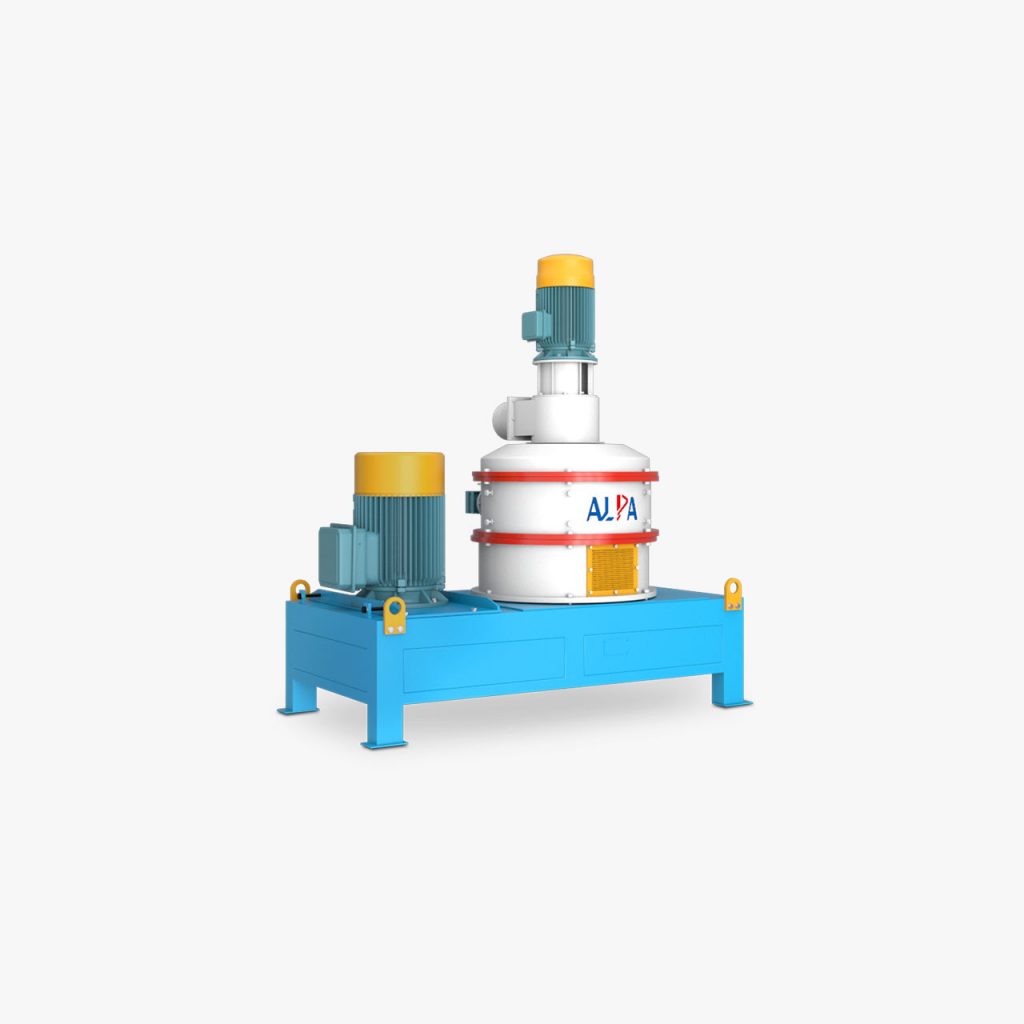
Powder coating is composed of micron particles with a particle size between 10 and 100 μm. Its preparation process and application performance are affected by the particle size, including surface charge, storage stability, powder loading rate during electrostatic spraying, and fluidized bed In-use stability, angle powder application and coating efficiency, etc. Starting from the surface characteristics of particles, the correlation between particle size and surface charge is introduced, which extends to the impact of particle distribution on product characteristics. It also discusses how to achieve a specific particle size distribution in the mechanical crushing and separation process.
In the production process of powder coatings, the particle size is broken into a particle size suitable for coating through a grinding mill for decades. However, the particle size spacing obtained by traditional grinding is usually between 1.8 and 2.0, which reduces the The diameter requires double cyclones to remove fine powder, thereby significantly reducing production efficiency and product yield. Grinding to obtain a narrow particle size distribution while achieving high yield has always been a major challenge in industrial production. In recent years, the particle size optimization grinding unit developed by Jiecheng can effectively adjust the fine powder content <10 μm by optimizing the grinding and classification process, and ensure that no fine powder is produced by repeatedly grinding large particles to the set particle size range. Products with large particle sizes are screened and removed, thereby controlling the particle size distribution within the diameter range of 1.3 to 1.6. At the same time, products with very high particle size concentration are obtained without reducing the yield.
Due to the agglomeration between particles, the smaller the particle size, the larger the void ratio; the wider the particle size distribution range, the packing density tends to become larger due to the filling effect of small particles between large particles. Close packing cannot be achieved with a single particle. Only multiple particle sizes can achieve close packing. Moreover, the greater the difference in particle size, the higher the packing density. When the gap between small particles and large particles is 4 to 5 times, finer particles can be filled. In the gaps of large particles, the shape and filling method of the particles will also affect the packing density. When there are two particle sizes with a quantity ratio of 7:3, or three particle sizes with a quantity ratio of 7:1:2, the entire The system has the highest packing density. Higher bulk density can improve the uniformity of the coating film, thereby achieving excellent leveling effect and gloss.
The grinding equipment that usually grinds powder coatings into suitable particle sizes is an air classification mill (ACM). The principle is that after the flakes enter the main grinding disc of the grinding mill, they are crushed into particles through centrifugal force and the collision with the grinding column of the main grinding mill. Then the inner wall of the grinding body is carried by the air flow to the cyclone separator for particle size classification. The grinder consists of a main grinding mill, an auxiliary grinding mill (classifier), a screen and a cyclone separator. The air volume and screen selection determine the proportion of small particles and large particles; at the same time, the characteristics of the powder coating, the feeding speed, the ambient temperature and humidity and air supply temperature also have a crucial impact on the size of the ground particles.
The currently industrialized particle size optimization mill can effectively reduce the formation of fine powder by changing the balance of the air inlet and outlet systems in the system, and obtain products with high particle size concentration. At the same time, the median particle size can be between 15 and 60 Adjusted within the μm range, it can produce products with normal particle sizes as well as thin-coated powders with a median particle size of 15 to 25 μm.
Applications of ground fiberglass

Ground glass fiber is made by grinding glass fiber raw strands using crushing equipment such as a hammer mill or ball mill. The average length of the fiber is 30 to 100 microns. When observed under a microscope, its cross-sectional area is cylindrical. Ground glass fiber in my country is usually calibrated by fiber length and fiber diameter. For example, EMF-200 refers to ground fibers with an average diameter of 7.5 microns and an average length of 80 to 110 microns.
At present, ground glass fiber is mainly used as high-performance friction material in my country. The traditional filler of friction materials is asbestos. However, it has been reported abroad that asbestos is a carcinogen. The international market has boycotted friction materials containing asbestos in recent years, providing a broad market for grinding glass fibers.
The ground glass fiber used as friction material undergoes surface chemical treatment to accelerate the penetration of resin and meet special molding performance and product performance requirements. Its specifications include EMF-200, EMF-250 and EMF-300, and the corresponding fiber length fluctuation ranges are 110-80 microns, 80-50 microns and 50-30 microns.
The friction material added with ground glass fiber not only has a high friction coefficient, but also has durability and thermal stability. When it comes into frictional contact with the close parts (such as the rotor), it only produces slight noise and causes wear of the rubbed parts. Volume is reduced to a minimum.
This high-performance friction material can be widely used as brake pads and clutch plates for automobiles, brake shoes for passenger and freight vehicles, railway locomotives and various drilling rigs, friction blocks for stamping equipment and engineering and mining machinery, and cones for lifting machinery. Shaped brake rings, etc.
Ground glass fiber can also be used as functional filler in ABS plastic to modify ABS plastic to meet the requirements of plastic processing and product application performance. When a factory was producing parts such as the program controller bottom plate and cover plate of a fully automatic washing machine, because they were made of pure ABS plastic, the bottom plate and cover plate were seriously warped and deformed, the dimensions of the parts were unstable, and the screw holes slipped. teeth, causing many finished products to be scrapped because they could not be assembled. Later, ground glass fiber was used to fill ABS plastic to modify the plastic: the shrinkage rate was reduced from the original 1% to 2% to 0.4% to 0.5%. When tightening self-tapping screws, the teeth will not slip or crack, and it will be manufactured at the same time. The board surface and parts are smooth, stiff and not warped, and the plastic processing performance is good. In addition, adding ground glass fiber to the laminate can improve the crack resistance and wear resistance of the laminate, reduce the shrinkage of the laminate, and improve the lamellar strength. At the same time, it also plays a certain role in improving the bending elastic modulus of laminates and compressing elastic molds. When the resin mixture with ground glass fiber is added to the mold, it can smooth the outer surface defects, round the edges and corners of the mold structure, and also round the reinforcing ribs covered with glass cloth that are pre-connected to the outside of the mold structure.
After the resin reinforced with ground glass fiber is cured, the hardness of the product is higher, and its thermal expansion performance is similar to that of hand lay-up FRP reinforced with glass cloth, so the product is less likely to crack.
The simultaneous use of surface-active components and ground glass fibers in the resin system can improve its wet strength performance, reduce water absorption, and increase the retention rate of wet strength.
10 Major Application Fields of Silica Powder
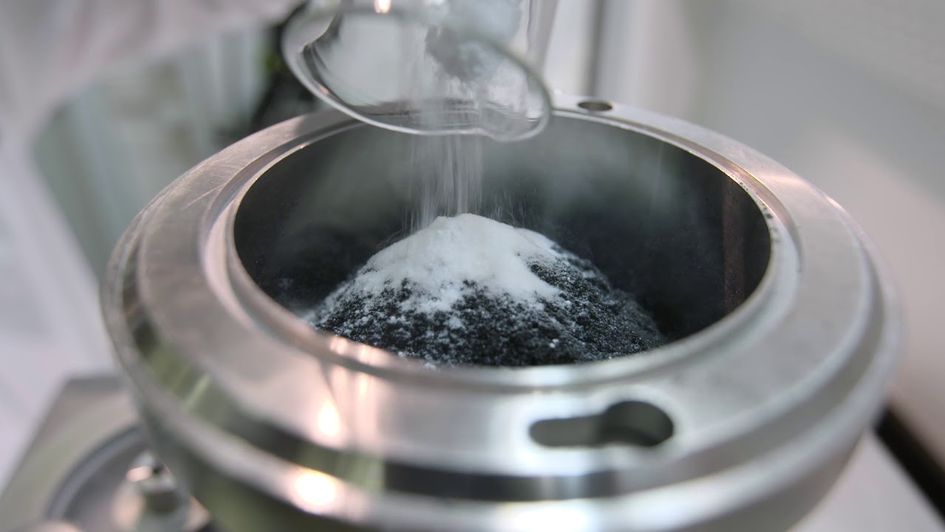
Microsilica powder is a silica powder made from crystalline quartz, fused quartz, etc., and processed through grinding, precision classification, impurity removal and other processes. It is widely used in copper-clad laminates, epoxy plastic sealants, electrical insulation materials, rubber, Plastics, coatings, adhesives, artificial stone, honeycomb ceramics, cosmetics and other fields.
1. Copper clad laminate
At present, silica powder used in copper-clad laminates can be divided into crystalline silica powder, fused silica powder, spherical silica powder and composite silica powder. The filling weight ratio of resin in the copper clad laminate is about 50%, and the filling rate of silica powder in the resin is generally 30%, that is, the filling weight ratio of silica powder in the copper clad laminate is about 15%.
2. Epoxy plastic sealing compound
Microsilica powder is the most important filler in epoxy molding compound (EMC), accounting for about 60%-90%. The performance improvement of epoxy molding compound needs to be achieved by improving the performance of silica powder. Therefore, the particle size, purity and sphericity of silica powder are important. degree has higher requirements.
3. Electrical insulation materials
Microsilica powder is used as epoxy resin insulating filler for electrical insulation products. It can effectively reduce the linear expansion coefficient of the cured product and the shrinkage rate during the curing process, reduce internal stress, and improve the mechanical strength of the insulating material, thereby effectively improving and improving the insulating material. mechanical and electrical properties.
4. Rubber
Silica powder has the advantages of small particle size, large specific surface area, good heat resistance and wear resistance, and can improve the wear resistance, tensile strength and modulus, high tear and other properties of rubber composite materials. However, the surface of silica powder contains a large amount of If the acidic silanol groups are not modified, the silica powder will be unevenly dispersed in the rubber, and the acidic groups will easily react with alkaline accelerators, prolonging the vulcanization time of the rubber composite.
5. Plastic
Microsilica powder can be used as a filler in polyethylene (PE), polyvinyl chloride (PVC), polypropylene (PP), polyphenylene ether (PPO) and other materials in the process of making plastics. It is widely used in construction, automobiles, electronic communications , insulation materials, agriculture, daily necessities, national defense and military industry and many other fields.
6. Paint
Microsilica powder can be used as a filler in the coating industry. It can not only reduce the cost of preparing coatings, but also improve the high temperature resistance, acid and alkali resistance, wear resistance, weather resistance and other properties of coatings. It can be widely used in building materials, automobiles, pipes, hardware, etc. Household appliances and other fields.
7. Adhesive
As an inorganic functional filling material, silicone powder can effectively reduce the linear expansion coefficient of the cured product and the shrinkage during curing when filled in the adhesive resin, improve the mechanical strength of the adhesive, improve heat resistance, permeability and heat dissipation performance, thereby improving the adhesion knotting and sealing effect.
The particle size distribution of silica powder will affect the viscosity and settling properties of the adhesive, thereby affecting the processability of the adhesive and the linear expansion coefficient after curing.
8. Artificial quartz stone
When silica powder is used as a filler in artificial quartz slabs, it can not only reduce the consumption of unsaturated resin, but also improve the wear resistance, acid and alkali resistance, mechanical strength and other properties of artificial quartz slabs.
9. Automobile honeycomb ceramics
The automotive exhaust filter DPF (Diesel Particulate Filter) made of honeycomb ceramic carrier for automobile exhaust purification and cordierite material for diesel engine exhaust purification is made of alumina, silica powder and other materials through mixing, extrusion molding, drying, sintering, etc.
10. Cosmetics
Spherical silica powder has good fluidity and large specific surface area, making it used in cosmetics such as lipstick, powder cake, and foundation cream.
Different application fields of silica powder have different quality requirements. The application research of silica powder will mainly focus on high-tech fields such as high-end copper-clad laminates, high-end coatings, high-performance adhesives, and insulating materials produced using spherical silica powder as raw materials. Refinement and functionality Specialization will be the mainstream direction of silica powder application in the future.
New thermal management materials continue to develop
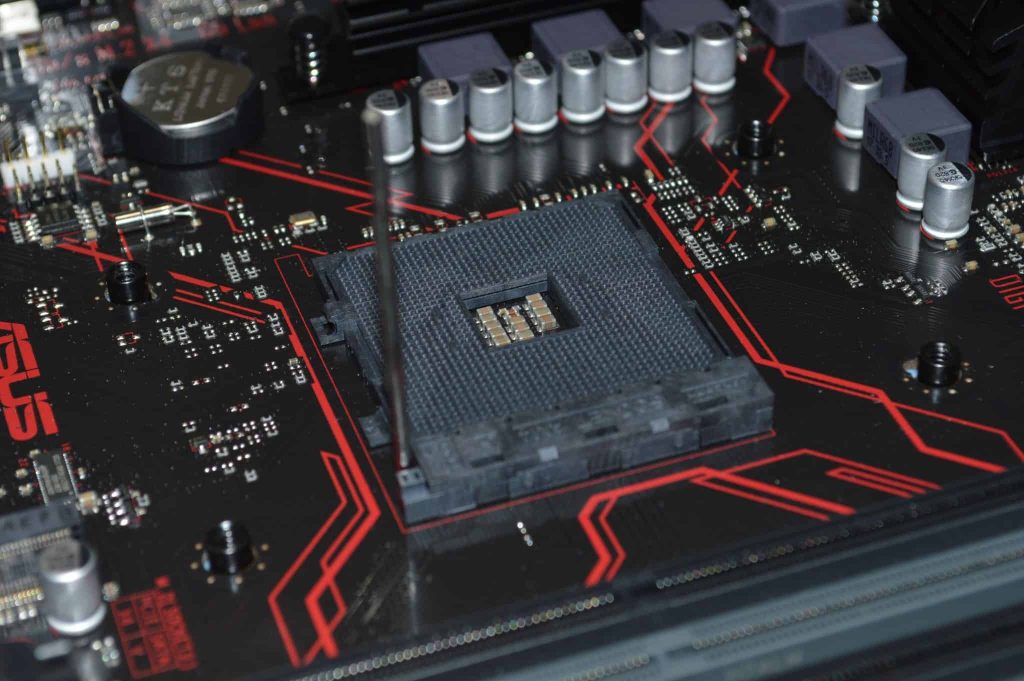
Thermal conductive material is a material that improves heat distribution and heat conduction efficiency in heat conduction and is used to ensure the reliability and service life of electronic equipment systems. According to its application scenarios and morphological properties, it mainly includes graphite heat dissipation film, thermal conductive heat dissipation materials (heat pipes, vapor chambers, etc.) and thermal conductive interface materials (such as thermal conductive silicone grease, thermal conductive gel, etc.).
The industrial development of thermally conductive materials can be traced back to the 1950s, when thermally conductive materials were mainly aluminum and copper; from the 1960s to the 1970s, silicone materials began to develop rapidly and heat pipes appeared. From the 1970s to the early 21st century, graphite materials developed rapidly and were widely used. Since then, with the development of new industries such as 5G and power batteries, the demand for thermal conductivity has surged, and new thermal management materials have continued to develop.
Thick graphite film
Natural graphite film is the first graphite-based heat distribution material and the earliest used heat distribution material. High-carbon flake graphite can obtain natural graphite film through chemical treatment and high-temperature expansion rolling. The manufacturing process is simple, and my country has abundant natural graphite reserves and outstanding cost advantages. The problem with natural graphite film lies in the following two points: First, as a natural product, its sheets are prone to structural defects, which will affect the local heat distribution performance; second, although the lateral thermal conductivity of natural graphite has exceeded that of most materials, However, its longitudinal thermal conductivity is not outstanding enough and it is mainly used in low-end product fields.
Graphene
Graphene is a new heat-distributing material, known as the "hexagonal warrior", with strong lateral thermal conductivity and flexibility. Graphene refers to a single layer of carbon atoms. Its theoretical thermal conductivity is as high as 5300W/m·K, making it one of the substances with the highest thermal conductivity so far. With the continuous enhancement of the performance of electronic products, the increasing demand for heat equalization has driven the use of graphene membranes. In addition to high thermal conductivity, the flexibility of graphene films is also an important property.
Ultra-thin heat pipe
The heat pipe has rapid temperature equalization characteristics and is composed of an outer hollow metal tube and an inner phase-changeable liquid. Its working principle is to rapidly equalize the temperature of the surface of the tube through the continuous circulation of liquid and vapor two-phase changes in the hollow metal tube cavity. Heat pipes are commonly used in various heat exchangers, coolers, etc., and are mainly responsible for rapid heat conduction. They are currently the most common and efficient heat-conducting element in the heat dissipation devices of electronic products.
Ultra-thin vapor chamber
Vapor chambers are high-end thermal devices and are mainly used in thickness- or weight-sensitive equipment. The vapor chamber is generally composed of external copper and internal phase-changeable condensate. Its structure and thermal soaking principle are similar to those of a heat pipe. The difference is that the vapor chamber takes on a two-dimensional plate shape. Through the four steps of conduction, evaporation, convection and solidification, the heat released by the point heat source is evenly distributed on the entire plane. The heat equalizing effect exceeds that of graphite-based materials.
Hybrid Filled Thermal Interface Materials
Thermal interface materials generally consist of two parts: matrix material and filler. The base material is mainly used to ensure that the thermal interface material can cover all locations where air gaps exist, and it is mainly made of fluid polymers. Fillers are made of various materials with high thermal conductivity, such as metals and metal oxides, nitrides, carbides, etc., to improve heat transfer efficiency.
Composite thermally conductive phase change materials
Thermal conductive phase change materials are mainly used in high-performance devices that require small thermal resistance and high thermal conductivity efficiency, with high reliability and strong safety. Its working principle is to use the phase change process to conduct heat. When the temperature reaches the phase change point, the thermal conductive phase material will undergo a phase change, changing from a solid state to a fluid state, and flows into the irregular gap between the heating element and the radiator under pressure.
The importance of powders to advanced ceramics
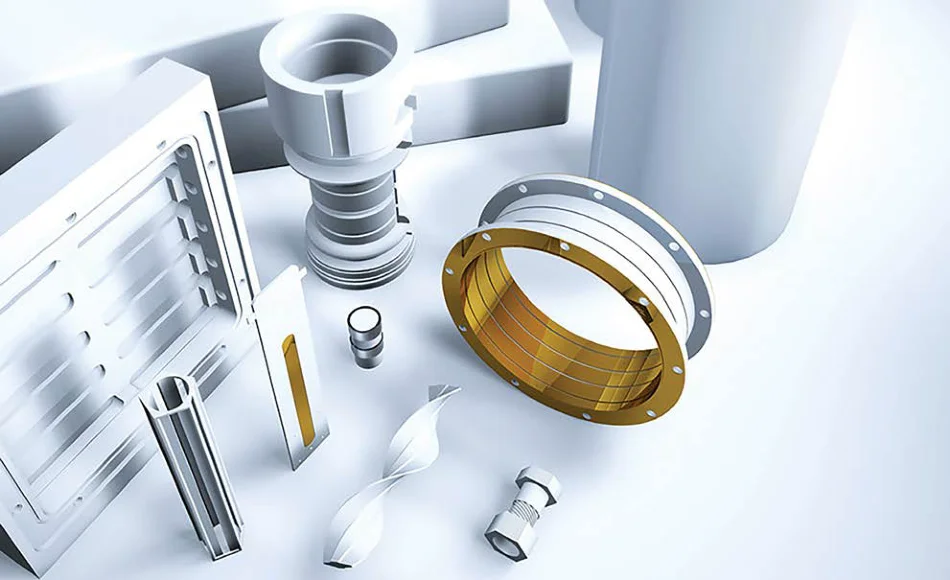
The importance of powders to advanced ceramics is directly reflected in people's definition of advanced ceramics.
The general definition of advanced ceramics is: using high-purity, ultra-fine artificially synthesized or selected inorganic compounds as raw materials, having precise chemical composition, precise manufacturing and processing technology and structural design, and having excellent mechanical, acoustic, optical and thermal properties. Ceramics with , electrical, biological and other properties are oxides or non-oxides composed of metallic elements (Al, Zr, Ca, etc.) and non-metallic elements (O, C, Si, B, etc.). They are composed of ionic bonds and covalent bonds. Bonded jointly bonded ceramic materials.
In terms of chemical composition, two aspects are generally pursued: high purity and precise ratio.
In terms of high purity. The presence of impurities can sometimes seriously affect the performance of products. For example, impurities such as silicon, calcium, iron, sodium, and potassium often exist in high-purity alumina. The presence of iron impurities will make the sintered material black and dark; sodium and potassium impurities will affect the electrical properties of the material, causing its electrical properties to deteriorate; and the remaining two impurities will cause the material's grains to grow abnormally during the sintering process. In terms of transparent ceramics, the impact of impurities is even greater. The presence of impurities in ceramic powder will directly declare the "blindness" of transparent ceramics. This is because impurities, as the second phase, are very different from the optical properties of the ceramic body material, often causing Scattering and absorption centers will greatly reduce the light transmittance of ceramics. In nitride ceramics such as silicon nitride and aluminum nitride, the presence of oxygen impurities can lead to a decrease in thermal conductivity.
In terms of ratio. In ceramic production formulas, most of the time there is no need for an extremely "high-purity" single component, but some auxiliary materials, such as sintering aids, are often added. In this case, accurate proportioning is the most basic requirement, because different chemical compositions and contents will have a decisive impact on the performance of the product.
Phase composition
Generally, the powder is required to have the same physical phase as the ceramic product as much as possible, and phase change is not expected to occur during the sintering process. Although sometimes phase change can indeed promote the densification of ceramics, in most cases, the occurrence of phase change is not conducive to the sintering of ceramics.
Particle size and morphology
Generally speaking, the finer the particles, the better. Because according to the existing sintering theory, the speed of body density is inversely proportional to the size of the powder (or its size to a certain power). The smaller the particles, the more conducive to sintering. For example, due to its high specific surface area, ultrafine aluminum nitride powder will increase the sintering driving force during the sintering process and accelerate the sintering process.
The better fluidity of ceramic powder with regular shape will have a positive impact on subsequent molding and sintering. The granulation process is to allow the powder to form a spherical shape under the action of the binder, which also indirectly shows that Spherical ceramic powder plays a positive role in improving the density of ceramics during the molding and sintering processes.
Uniformity
The uniformity of powder is easily overlooked, but in fact its importance is more important than the previous aspects. In other words, the performance of the previous aspects is very important to see its uniformity.
The same goes for particle size. Fine particle size is important, but if the average particle size is only fine and the distribution is uneven or very wide, it will be extremely detrimental to the sintering of ceramics. Because particles of different sizes have different sintering speeds, areas with coarser particles are not likely to be dense. At the same time, coarse particles may also become the nucleus for abnormal grain growth. Finally, the ceramic not only needs to be densified at a higher temperature, but also has an uneven microstructure, seriously affecting its performance.
Process Difficulties of Transparent Ceramics
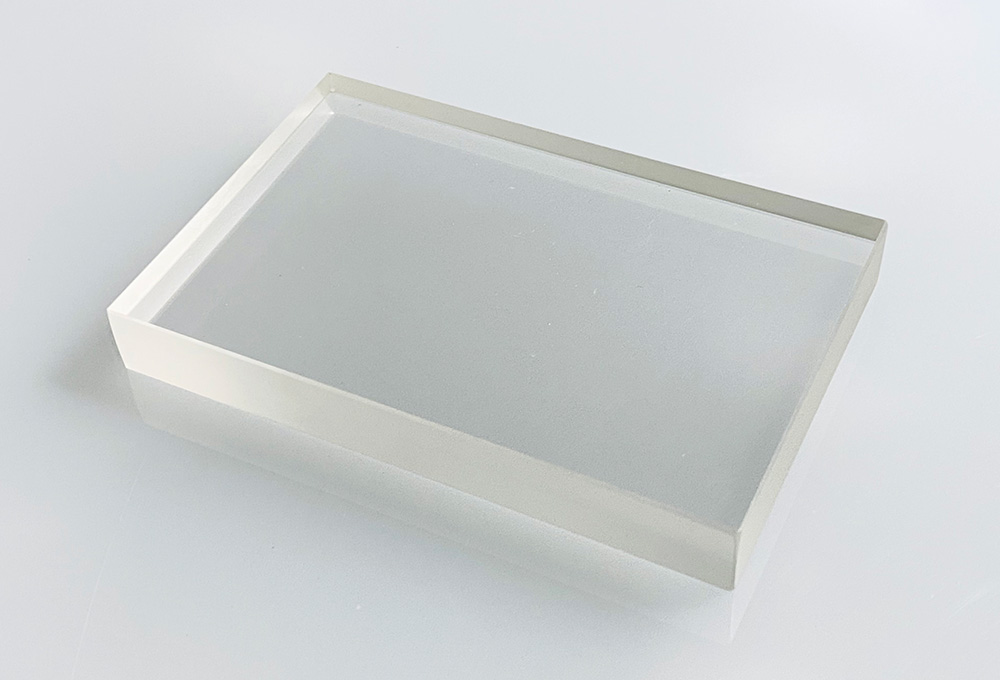
As a high-tech material, transparent ceramics have broad application prospects in the fields of optics, electronics, aerospace and other fields. However, there are many difficulties in the preparation process of transparent ceramics, which are mainly reflected in the following aspects:
1. High-temperature smelting: The preparation of transparent ceramics requires the raw materials to be smelted into a transparent glass phase at high temperatures, usually as high as 1700°C or above. In this process, temperature and melting time need to be controlled to avoid the generation of impurities and crystallization, while ensuring the uniformity and transparency of the glass phase.
2. Removal of bubbles: During the preparation process of transparent ceramics, the generation of bubbles is a common problem. These bubbles can form defects inside the ceramic, affecting its optical properties and mechanical strength. In order to remove bubbles, special degassing processes and equipment are required, such as vacuum degassing, inert gas protection, etc. In the preparation process of transparent ceramics, the removal of air bubbles is a key step.
3. Precisely control the composition: The composition of transparent ceramics has an important impact on its optical and mechanical properties. In order to prepare high-quality transparent ceramics, the ingredient ratio and purity of the raw materials need to be precisely controlled to ensure they remain consistent throughout the preparation process.
4. Sintering temperature: The sintering temperature of transparent ceramics is crucial to its densification and optical properties. If the temperature is too high, the ceramic will crystallize or produce other impurities. If the temperature is too low, the sintering will be incomplete or the density will be insufficient.
5. Dimensional accuracy: Transparent ceramics need to maintain high dimensional accuracy during the preparation process to ensure their optical and mechanical properties. This requires precise control of the preparation process, such as mold design and processing, molding pressure, etc. At the same time, the shrinkage rate of ceramics needs to be controlled during the sintering process to ensure the dimensional accuracy of the final product.
Particle size of raw materials: The particle size of raw materials for transparent ceramics has a direct impact on its dimensional accuracy. If the particle size distribution of the raw materials is uneven, the size of the ceramic products will be unstable. Therefore, raw materials with uniform particle size distribution and suitable particle size should be selected during production and strictly screened.
Molding process: The molding process is a key link that affects the dimensional accuracy of transparent ceramics. Different molding methods (such as die-casting, extrusion, grouting, etc.) have different effects on dimensional accuracy. When selecting the molding process, a reasonable selection should be made based on the product shape, dimensional accuracy requirements and production batch size.
Firing system: Firing is an important part of the production of transparent ceramics. A suitable firing system is crucial to improving the dimensional accuracy of transparent ceramics. Temperature curve, firing time, firing atmosphere and other factors will affect the dimensional accuracy of transparent ceramics. During production, a reasonable firing system should be formulated based on the actual situation, and the firing process should be monitored in real time to ensure the stable execution of the firing system.
Equipment and tools: The accuracy of production equipment and tools will also affect the dimensional accuracy of transparent ceramics. For example, the accuracy of molds, cutting tools, etc. directly affects the size of ceramic products.
Quality inspection and control: In order to ensure the dimensional accuracy of transparent ceramics, a complete quality inspection and control system should be established during the production process.
6. Cooling rate: During the preparation process of transparent ceramics, the cooling rate has an important impact on its internal structure. Cooling too quickly may cause internal stress or cracks, while cooling too slowly may cause crystallization or other impurities.
There are many difficulties in the preparation process of transparent ceramics, and multiple aspects such as raw materials, processes, equipment, and preparation environment need to be comprehensively considered. Only through continuous technological innovation and accumulation of practical experience can high-quality transparent ceramic materials be prepared.

